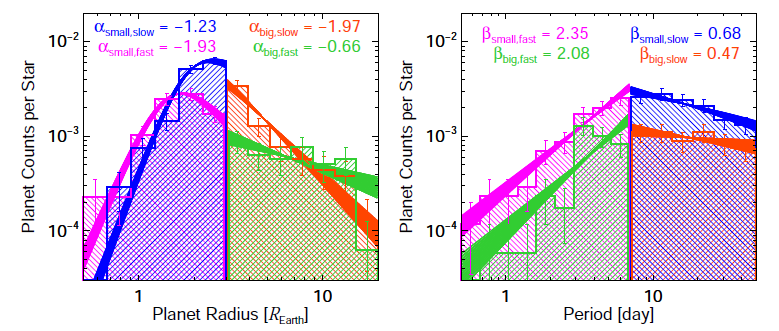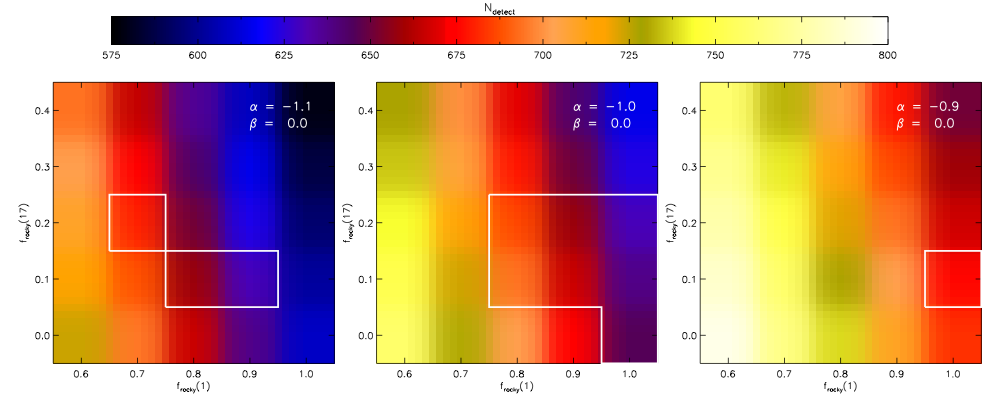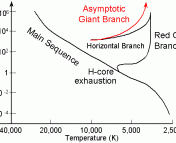Title: Indications for an influence of Hot Jupiters on the rotation and activity of their host stars
Authors: K. Poppenhaeger, S.J. Wolk
First Author’s institution: Harvard-Smithsonian Center for Astrophysics
Binary star systems are useful for comparing the evolution and dynamics of two different stars. Since the stellar pairs in a binary are usually presumed to have formed at the same time from the same protostellar cloud, we can directly compare any apparent discrepancies in the properties of the two. The situation becomes more interesting once an orbiting exoplanet is thrown into the mix. It seems unlikely that a planet could affect the dynamics of a host star orders of magnitude larger in mass, but observational studies have found correlations between stellar activity (ex. solar flares, coronal mass ejections, etc.) and the presence of hot Jupiters.
In this paper, the authors examine five different binary star systems with at least one exoplanet orbiting one of the stars (designated as the primary star). The systems were selected such that the separations within each binary pair are sufficiently large (>100 pc) so that the stars do not affect each other through mutual interactions. The companion star without a known exoplanet acts as an observational control to compare the lack of observed planetary influence. The authors use X-ray observations taken from XMM-Newton and Chandra to measure the magnetic activity levels of these binary systems resulting from coronal and chromospheric emission. By measuring stellar X-ray luminosities, the authors can derive the ages of these component stars by comparing the observed X-ray emission to those of stellar samples of known ages.
The authors find that for three of these binary systems, the age estimates between the primary and secondary stars agree well with each other. Since binary stars are expected to form from the same protostellar cloud, we would expect them to have roughly same age. In the two other systems, the authors note discrepancies between the inferred ages of the stellar components. That is, the primary star with the exoplanet seem to have stronger than expected X-ray emission relative to the secondary. If binary star pairs should have similar properties, what can cause one star to deviate in such a way from its partner?
One mechanism to explain these differences is that a extrasolar planet orbiting the primary star could induce tidal bulges in the star’s atmosphere. This interaction can inhibit the spin-down of a host star, and the result is that the authors infer an age discrepancy between the stellar components based on rotation and magnetic activity. Additionally, the authors explore the possibility of angular momentum transfer between the planet and its host star. By estimating the angular momentum for each orbiting exoplanet, the authors show that this is greater than the angular momentum of the rotating host star (for comparison, Jupiter has 99% of the angular momentum in the our solar system, even though the Sun has 99% of the mass). It is therefore possible that the stellar rotation rate could be influenced angular momentum transfer via a planet migrating towards the star.
Since stellar rotation is influenced by magnetic coupling to its circumstellar disk, a planet migrating inwards towards its host star can create a gap in the disk (due to resonance effects), and this gap could affect the star-disk rotational coupling. The resulting change in stellar rotation period could potentially explain the overrotation of the primary star relative to the secondary star in the binary systems examined in this paper. The apparent differences in stellar rotational evolution are sensitive to the initial rotational periods of the stars during their formation, so this could be another explanation for the mentioned discrepancies.
Traditionally, stellar rotation and activity has been known to slow down due to magnetic braking through stellar winds, but the effects of hot Jupiters offer an interesting alternative to this effect. Currently, the authors are conducting observations of a larger sample of such systems to see whether these hot Jupiters are viable candidates for affecting the dynamics of their host stars. Finding other instances of this kind of interaction would substantiate this mechanism and suggest a new avenue for modeling stellar dynamics with their exoplanets.





